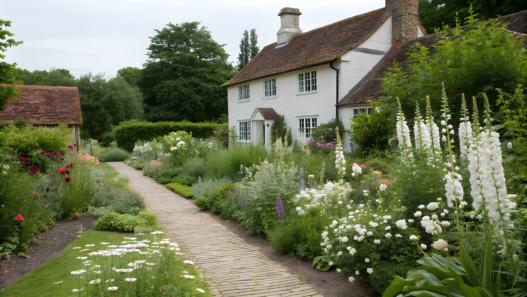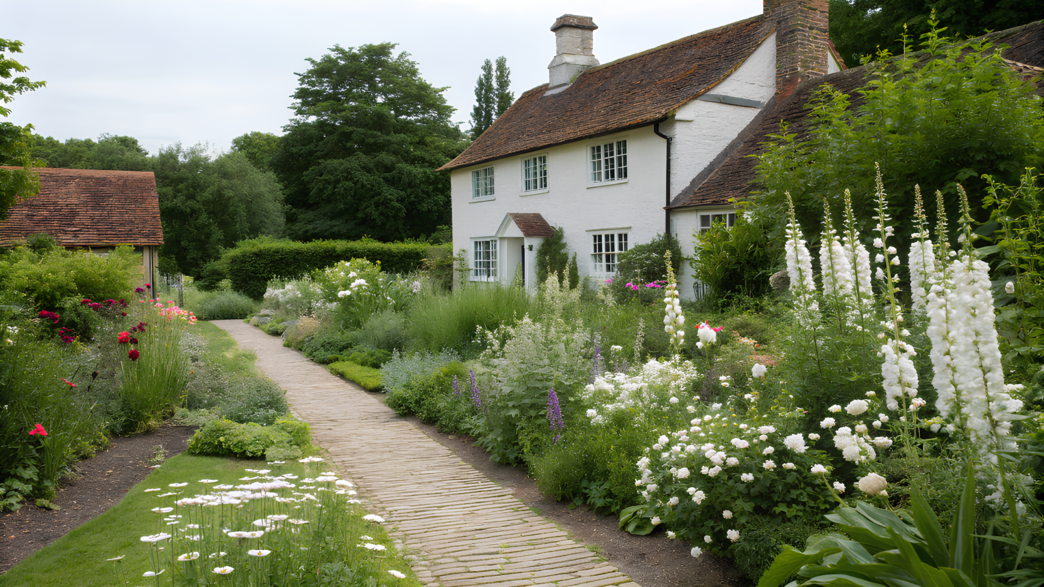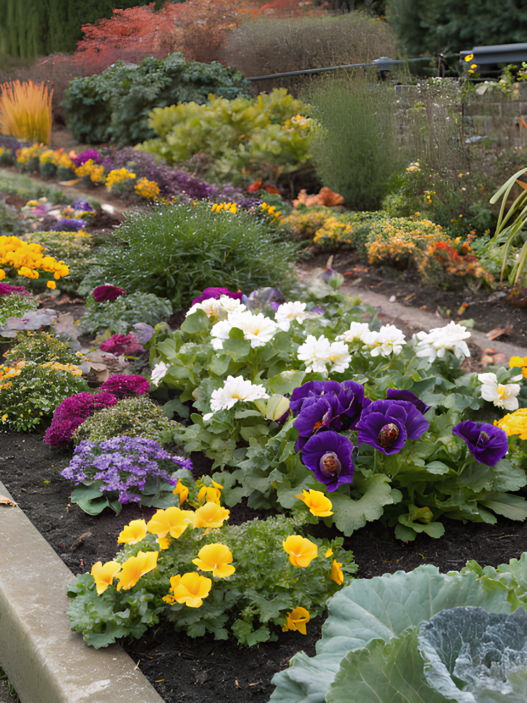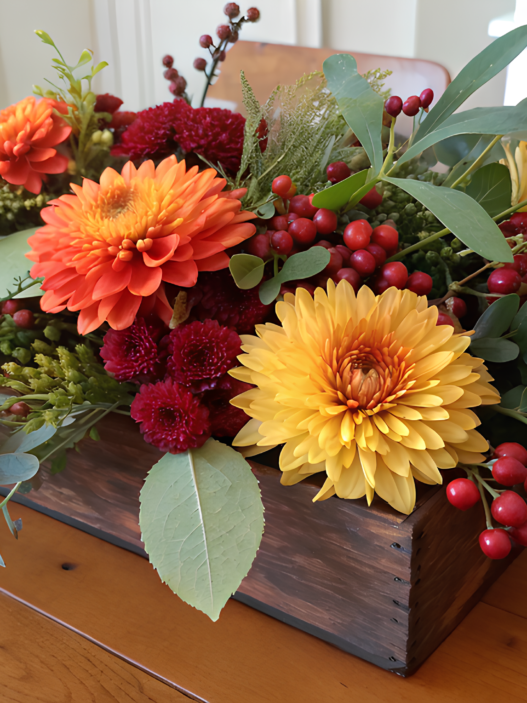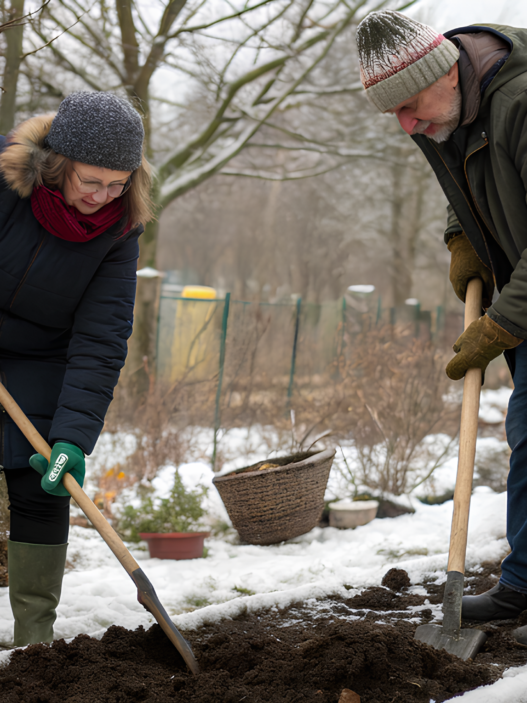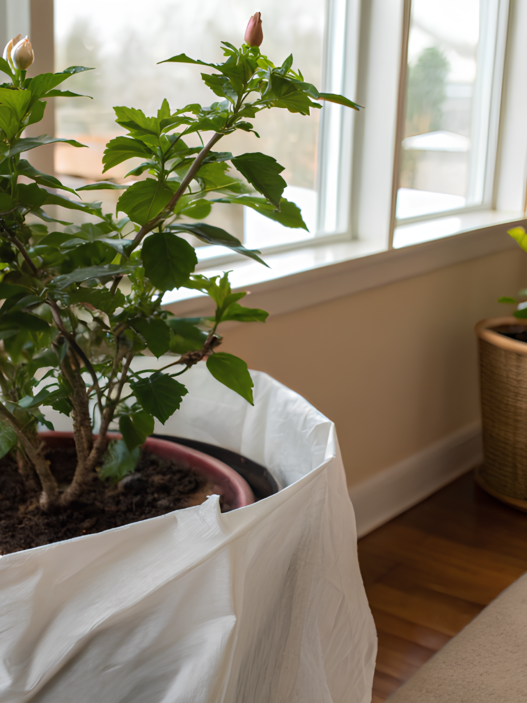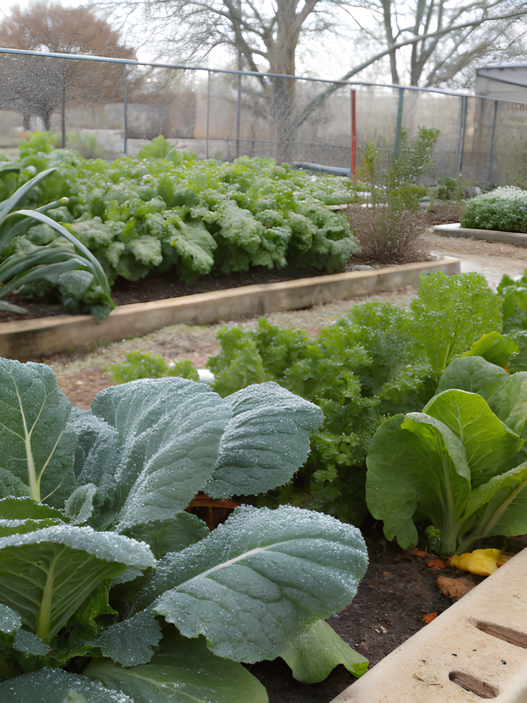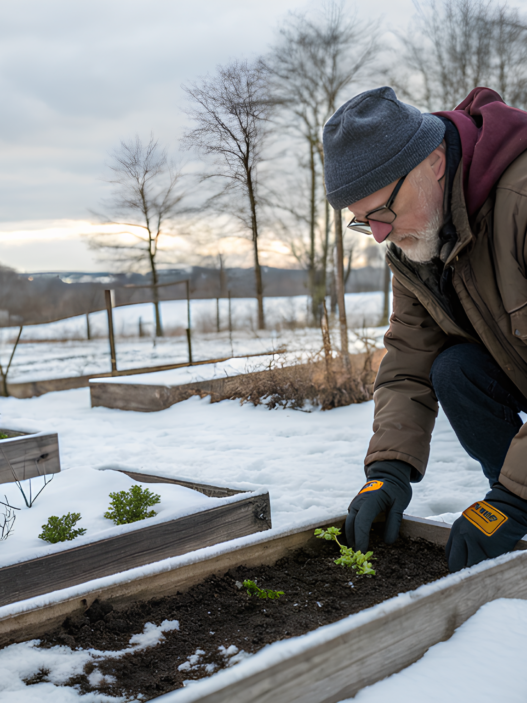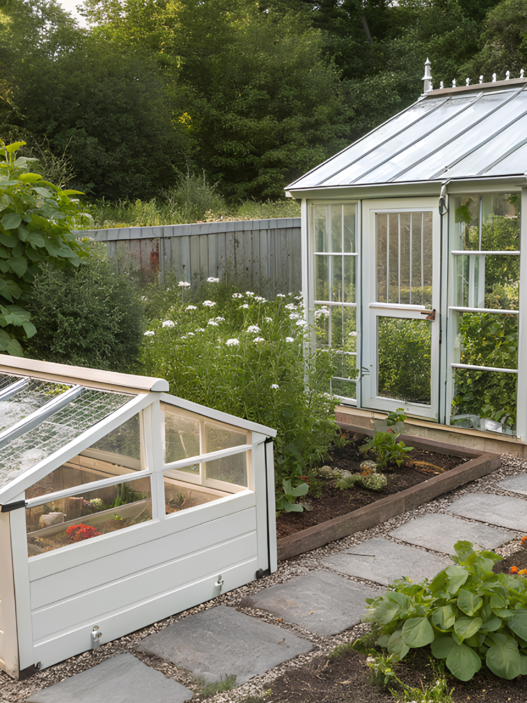Let’s be honest and admit that creating the perfect English cottage garden is a dream for many of us. I’ve been wondering for a long time how to bring this romantic, slightly informal design to life without creating chaos in the garden. After several attempts and a couple of mistakes (without them), I realized that the ideal garden does not appear by itself, you have to work on its creation. And so today in this article I will share my experience and give you practical advice so that you can pass your way to create a garden with the fewest mistakes. So, if you’re ready to take a risk, let’s get started!
What defines an English cottage style garden
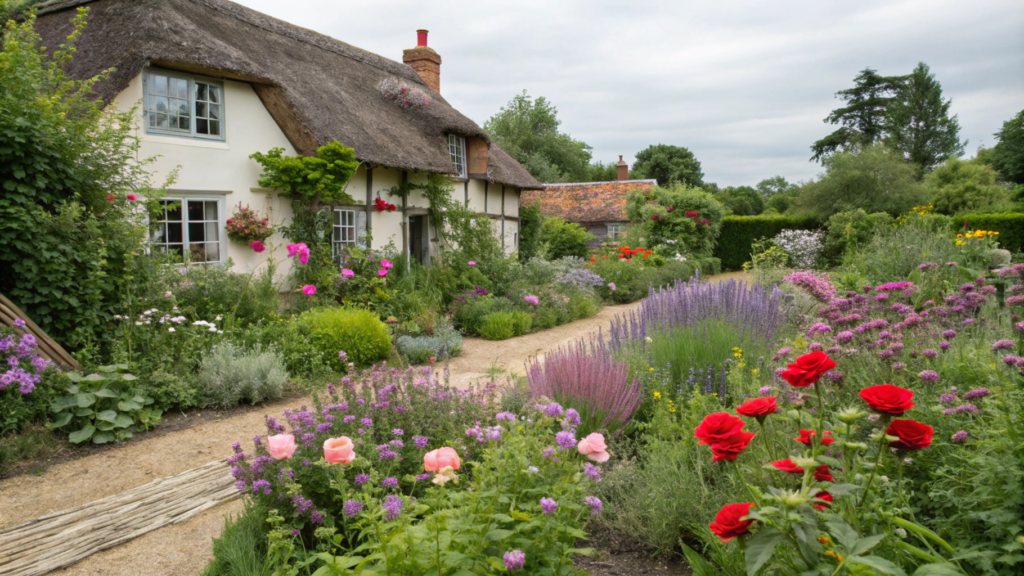
Simply put, an English cottage style garden, then, is not just about plants; it’s more about creating a planned chaos of color and texture. Moreover, this chaos looks both attractive and functional. Traditionally, English cottage gardens are full of layered perennials, vegetables, herbs and woven roses. Although they look ‘natural’, they require careful planning, that is, choosing the right plants and thoughtful layout, so that the garden feels relaxed, informal, accessible.
For example, our garden has everything from classic lavender to field poppies to luxurious roses.
Plant Selection
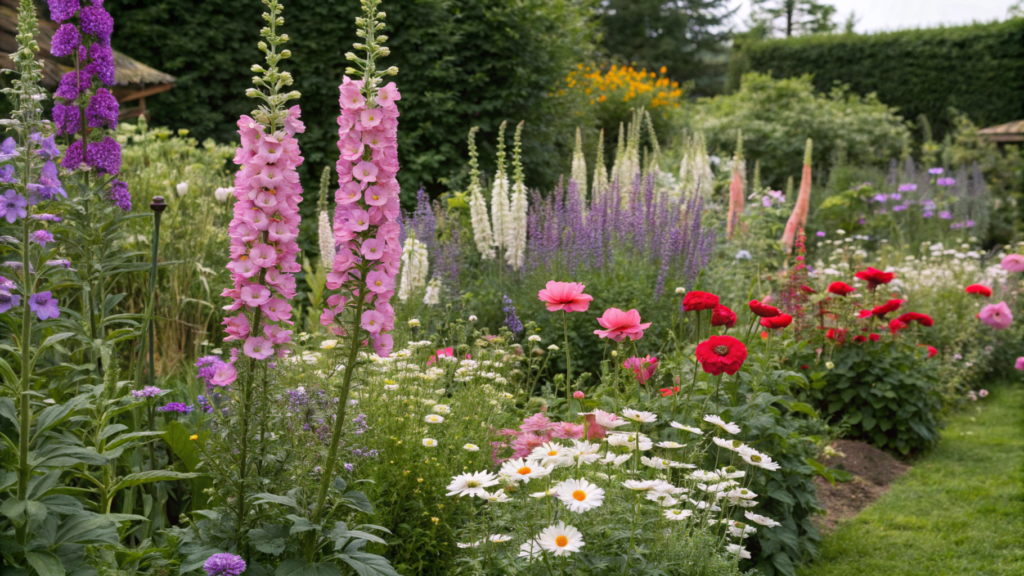
When choosing plants for an English cottage garden, you need to focus on a mix of perennials, annuals and shrubs that will diversify color and structure. The beauty here is in the variety, so aim for layering: tall delphiniums in the background, stable mallows and foxglove in the middle, and lower plants such as primroses and daisies in the foreground. We even added culinary herbs like sage and thyme, both for beauty and for use in cooking different dishes.
Tip. For a traditional look, choose pastel shades, diluting them with bright colors. For example, lavender, yellow and soft pink shades combined with bright red poppies create the very classic charm we strive for.
Give the garden a “wild” feel, but with structure
Despite the natural, somewhat “wild” feel of cottage style gardens, they still need structure to avoid appearing neglected. In our garden, we made paths to maintain harmony and to move safely around the property. You can create paths, low fences or small trellises for structure. And that’s where wicker roses come in handy! A simple trick for creating an English cottage style garden is to allow curly plants to wrap around these supports, which gives the garden a wilder look but still keeps things tidy.
Another tip. Leave space for air circulation. This is very important for plant health, especially in damp areas. The first year I didn’t take this into consideration and I encountered mold on my roses. I can safely say that lesson learned!
Creating Year-Round Bloom
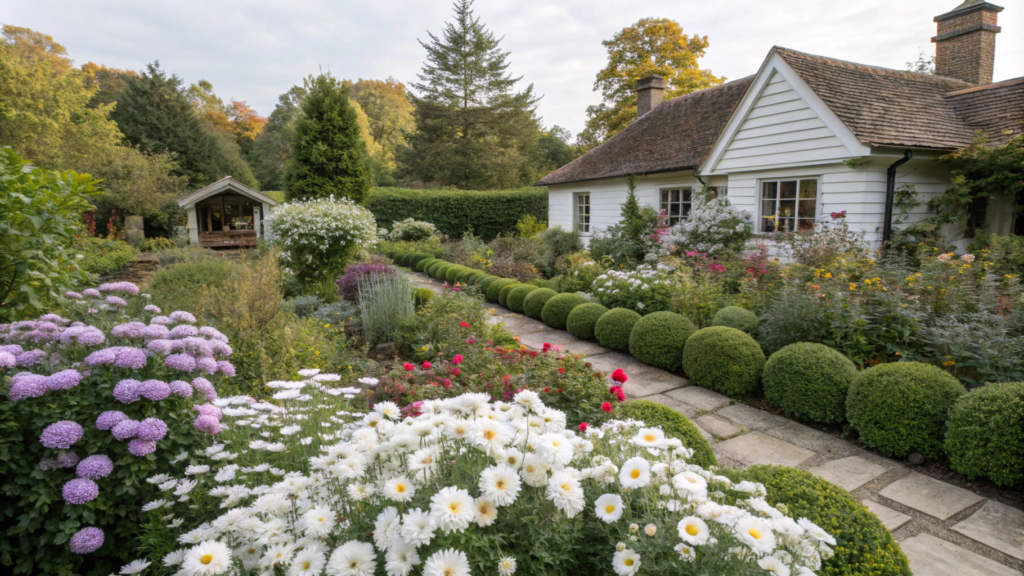
To make an English cottage garden look attractive, it is desirable for it to bloom all the time. It is good to plan the garden taking into account the seasons, for example, tulips and daffodils are suitable in the spring, and peonies, roses and foxgloves are good to fill the garden with in the summer; and in the fall, let asters and chrysanthemums bloom. This approach pays off and not only gives the garden life all year round, but also supports local pollinators. And this is simply invaluable for any garden.
To make the garden look harmonious, plant some evergreens for structure. A couple of boxwood bushes in winter will make the garden lively and will decorate it very much even on frosty days.
Mulch and fertilize regularly
Cottage style gardens also need nutrition to keep the plants productive. When we first planted our garden, I noticed how quickly plants deplete the soil. So adding compost or organic mulch in the spring each year is just vital to help the soil recover. Not only does it keep the soil healthy, but it also helps retain moisture, which is especially important in the summer.
Tip on Amazon. Use organic garden compost or bone meal for soil care. These products are easy to find online, and they make a big difference in garden productivity.
Garden and wildlife
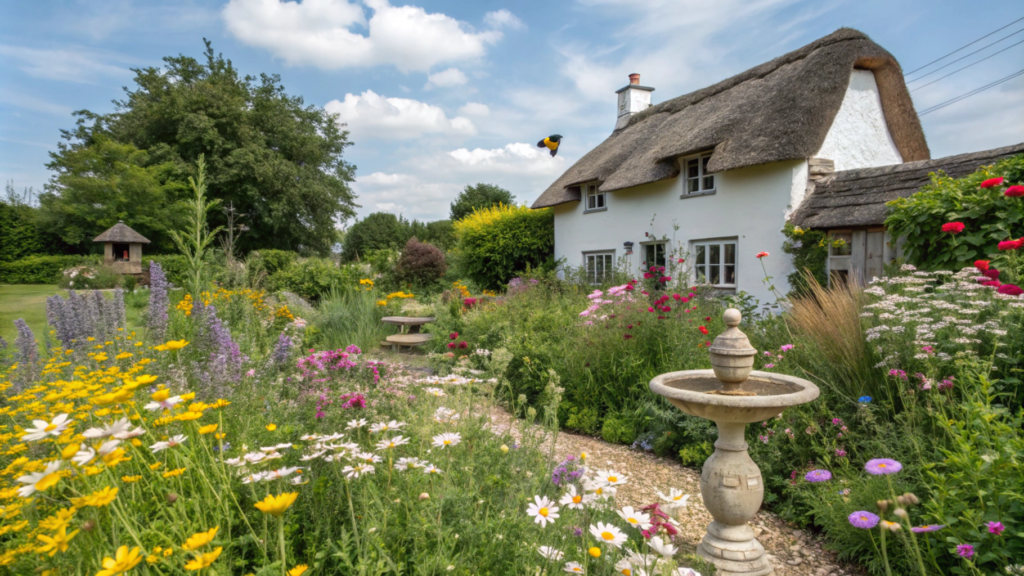
A cottage style garden is not just for people, but also for wildlife. Planting meadow flowers, installing bird drinkers or creating a bee house attract pollinators such as bees, butterflies and birds. Not only do they enhance the charm and beauty of the garden, but they also play an important role in pollination. And trust me, knowing that your garden is supporting the local ecosystem is a good feeling!
In our garden, we installed a small bird drinker as a miniature arrangement and it blended well into the garden landscape. Watching the birds daily makes me realize how connected our gardens are to nature.
Don’t forget the seating area
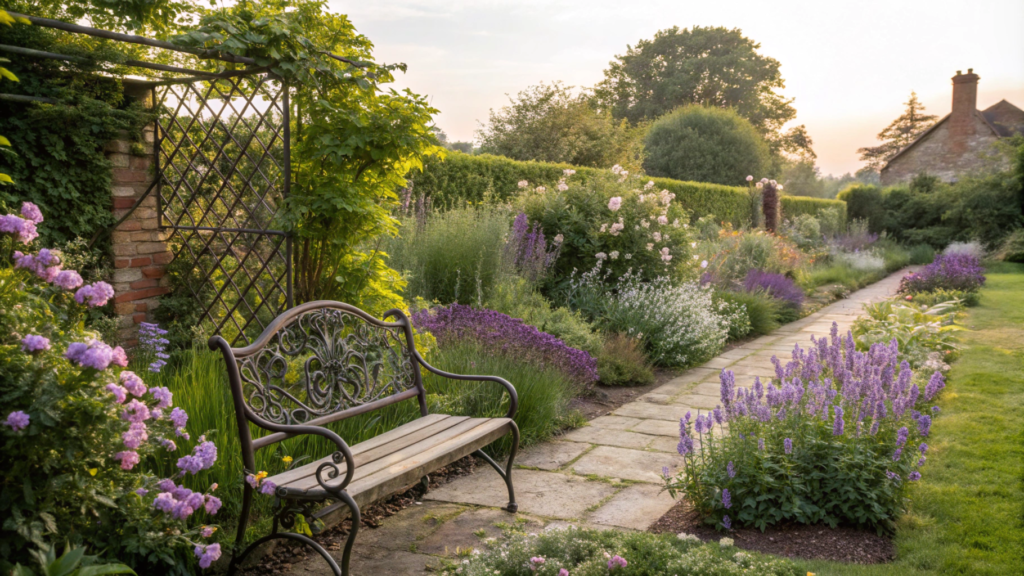
Every English cottage garden simply must have a cozy spot where you can enjoy the fresh air and birdsong. Whether it’s a wooden bench under a tree or a small table amongst the flowers, a seating area invites you to sit down and relax for a while. In our garden, we placed a vintage wrought iron bench by the lavender, creating a cozy spot for morning coffee.
Tip on Amazon. For a classic look, consider a cast iron garden bench or an Adirondack wooden chair – they’re sturdy, look good, and will blend perfectly into the garden landscape.
Start small, dream bigger!
Creating the perfect English cottage style garden is not just a project. It is a journey you must take, it requires patience and a willingness to adapt. Every season is different, bringing new ideas and challenges. Don’t let that stop you. It took us three years for our garden to take shape, but even now we are still learning.
Start with a small corner, get to know the plants and watch your garden gradually transform. Not immediately, but one day you will look back and see the garden of your dreams.
